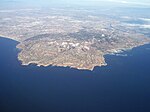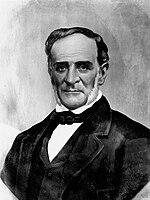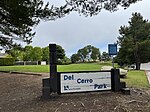Palos Verdes Peninsula

The Palos Verdes Peninsula (Palos Verdes, Spanish for "Green Sticks [trees]") is a peninsula and sub-region of the Los Angeles metropolitan area, located within southwestern Los Angeles County in the U.S. state of California. Located in the South Bay region, the peninsula contains a group of cities in the Palos Verdes Hills, including Palos Verdes Estates, Rancho Palos Verdes, Rolling Hills and Rolling Hills Estates, as well as the unincorporated community of Westfield/Academy Hill. The South Bay city of Torrance borders the peninsula on the north, the Pacific Ocean is on the west and south, and the Port of Los Angeles is east. As of the 2010 Census, the population of the Palos Verdes Peninsula is 65,008. The hill cities on the peninsula are known for dramatic ocean and city views, distinguished schools, extensive horse trails, and high value homes.
Excerpt from the Wikipedia article Palos Verdes Peninsula (License: CC BY-SA 3.0, Authors, Images).Palos Verdes Peninsula
Georgeff Road,
Geographical coordinates (GPS) Address Nearby Places Show on map
Geographical coordinates (GPS)
| Latitude | Longitude |
|---|---|
| N 33.7586472222 ° | E -118.345844444 ° |
Address
Georgeff Road 16
90274 , Rolling Hills
California, United States
Open on Google Maps









